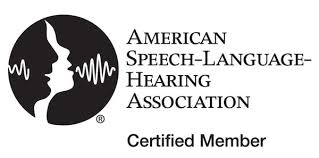
To use in your report, highlight text first then:
COPY
WINDOWS: Ctrl + C
MAC: Command + C
PASTE with no Formatting
WINDOWS: Ctrl + Shift + V
MAC: Shift + Option + Command + V
PASTE with Formatting
WINDOWS: Ctrl + V
MAC: Command + V
**Use for templates with tables**
Comprehensive Test of Phonological Processing - 2nd Edition (CTOPP-2)
The Comprehensive Test of Phonological Processing - 2nd Edition (CTOPP-2) was administered on DATE. This test assesses Phonological Awareness, Phonological Memory, and Rapid Symbolic Naming. Phonological Awareness refers to an individual’s awareness and access to the sound structures and units of his or her oral language. This ability is necessary in order to them distinguish between units as well as manipulate these units. Deficits in this area can lead to difficulty with reading and writing. Phonological Memory refers to coding information phonologically for temporary storage in working or short-term memory. Deficits in this area can lead to difficulty learning new written and spoken vocabulary. Rapid Symbolic Naming requires efficient retrieval of phonological information from long –term or permanent memory. When reading one must rapidly retrieve phonemes associated with letters and letter pairs, for pronunciation of common word segments and pronunciation of whole words. Deficits in this area may lead to difficulty in reading fluency.
A deficit in one or more of these kinds of phonological processing abilities is viewed as the most common cause of learning disabilities in general, and of reading disabilities in particular. Phonological processing abilities also support effective mathematical calculation, listening comprehension, and reading comprehension. Percentile ranks represent values that indicate the percentage of the distribution that is equal to or below a particular score. Subtest scaled scores provide the clearest indication of an individual’s subtest performance. Subtest scaled scores are based on the mean of 10 and a scaled deviation of 3. Results are as follows:
SUBTESTS
| Core | Raw Score | Age Equivalent | Grade Equivalent | Percentile Rank | Scaled Score | Description |
| Elision (EL) | ||||||
| Blending Words (BW) | ||||||
| Phoneme Isolation (PI) | ||||||
| Memory for Digits (MD) | ||||||
| Nonword Repetition (NR) | ||||||
| Rapid Digit Naming (RD) | ||||||
| Rapid Letter Naming RL) | ||||||
| Supplemental |
||||||
| Blending Nonwords (BN) | ||||||
| Segmenting Nonwords (SN) | ||||||
Subtests
Elision (EL) - measures the extent to which an individual can say a word, and then say what is left after dropping out designated sounds.
X received a scaled score of X and a percentile of X which is write in description. X (give strengths). Difficulty was noted with ---
Blending Words (BW) - measures an individual’s ability to combine sounds to form words.
X received a scaled score of X and a percentile which is write in description. X (give strengths). Difficulty was noted with ---
Phoneme Isolation (PI) - measures an individual’s ability to identify an individual sound from a group of sounds strung together to form words.
X received a scaled score of X and a percentile which is write in description. X (give strengths). Difficulty was noted with ---
Memory for Digits (MD) - measures the extent to which an individual can repeat a series of numbers ranging in length from two to eight digits.
X received a scaled score of X and a percentile which is write in description. X (give strengths). Difficulty was noted with ---
Nonword Repetition (NR) - measures an individual’s ability to repeat nonwords that range in length from 3 to 15 sounds.
X received a scaled score of X and a percentile which is write in description. X (give strengths). Difficulty was noted with ---
Rapid Digit Naming (RD) - measures the speed with which an individual can name the numbers on two pages.
X received a scaled score of X and a percentile which is write in description. X (give strengths). Difficulty was noted with ---
Rapid Letter Naming (RL) - measures the speed with which an individual can name letters on two pages.
X received a scaled score of X and a percentile which is write in description. X (give strengths). Difficulty was noted with ---
Supplemental
Blending Nonwords (BN) measures an individual’s ability to combine speech sounds to make nonwords
. X received a scaled score of X and a percentile which is write in description. X (give strengths). Difficulty was noted with ---
Segmenting Nonwords (SN) measures an individual’s ability to say the separate phonemes that make up a nonword.
X received a scaled score of X and a percentile which is write in description. X (give strengths). Difficulty was noted with --
Composites
The most reliable scores from the CTOPP-2 are the composite scores. The composite scores are derived by adding the subtest scaled scores and converting the sum to a composite score. The composite scaled score has a mean of 100 and a scaled deviation of 15.
Results are as follows:
| Sum of Scaled Scores | Percentile | Composite Scores | Description | |
| Phonological Awareness | ||||
| Phonological Memory | ||||
| Rapid Symbolic Naming | ||||
| Alternate Phonological Awareness |
Phonological Awareness Composite Score is comprised of three subtests, Elision, Blending Words, and Phoneme Isolation. This score measures a student’s awareness and access to the phonological structure of oral language.
X received a scaled score of X and a percentile rank of X which is write in description
Phonological Memory Composite Score is comprised of two subtests, Memory for Digits and Nonword Repetition. This score represents a student’s ability to code information phonologically for storage in short-term or working memory.
X received a composite score of X and a percentile rank of which is write in description
Rapid Symbolic Naming Composite Score is comprised of the scaled scores of the two subtests Rapid Digit Naming and Rapid Letter Naming. This score represents the ability to efficiently retrieve phonological information and quickly and repeatedly execute a sequence of operations.
X received a scaled score of X and a percentile rank of which is write in description
Alternate Phonological Awareness Composite Score is comprised of two subtests, Blending Nonwords and Segmenting Nonwords. This score measures a student’s awareness and access to the phonological structure of oral language exclusively with nonwords.
X received a scaled score of X and a percentile rank of which is write in description





